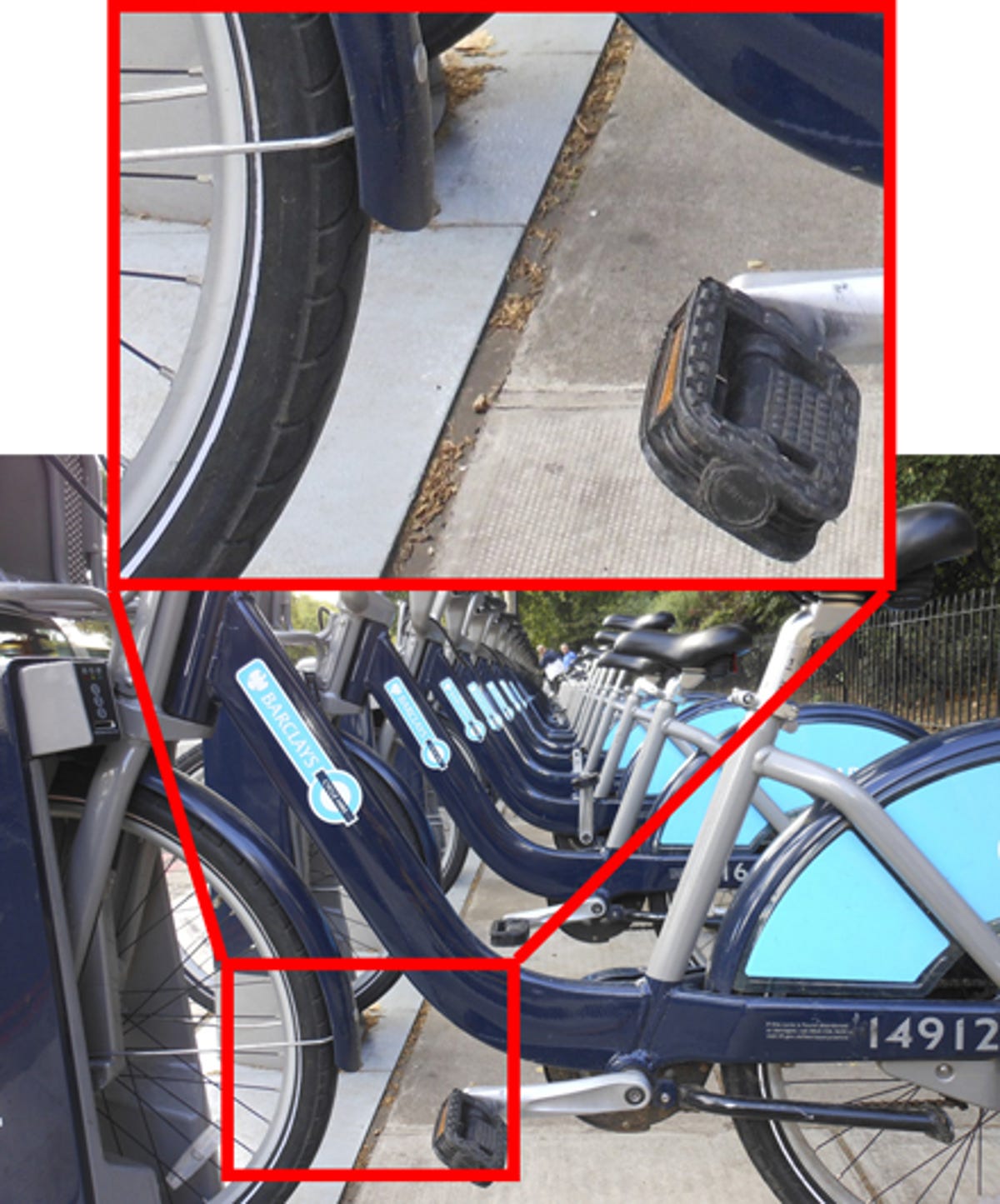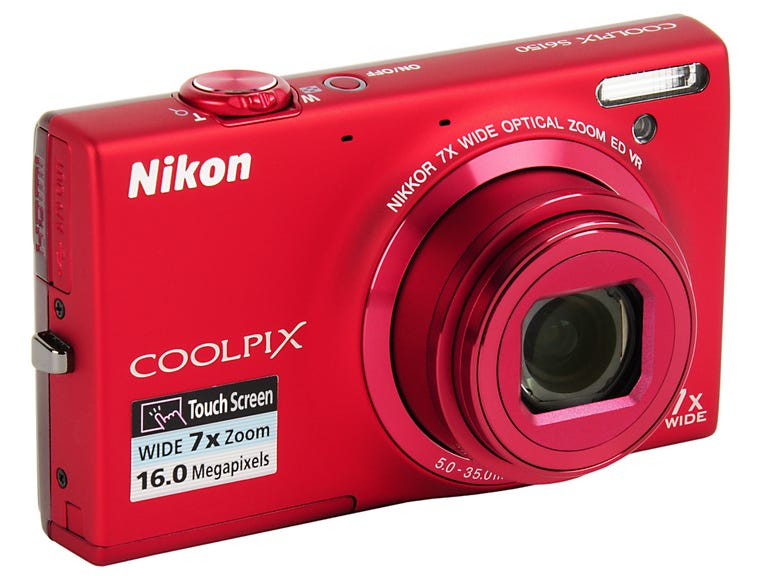 Why You Can Trust CNET
Why You Can Trust CNET Nikon Coolpix S6150 review: Nikon Coolpix S6150
Feature-packed and keenly priced, the Nikon Coolpix S6150 compact camera is a great choice for cash-conscious buyers. It's also well suited to those who would rather avoid the more technical side of photography.
If you haven't recently been camera shopping, prepare for a surprise. The Nikon Coolpix S6150 offers a 16-megapixel sensor, a 7x zoom and a touch-sensitive display for a mere £160. Is this a case of getting what you pay for, or has Nikon served up a genuine bargain?
The Good
The Bad
The Bottom Line
Performance and test shots
The Coolpix S6150 and more expensive Coolpix S100 match each other pixel for pixel in the sensor stakes. What sets them apart is their lens arrangement and sensitivity. The S6150 has both a longer zoom and a lower minimum sensitivity, both of which are points in its favour that translate into better results. While you can get closer to your subject without changing your position with the S6150, we also noticed tidier pixels once we'd downloaded the results, as it had a tendency to stick with ISO 80 when shooting in bright, outdoor situations.
Edges were sharper than they were with the S100 in those photos, characterised by defined geometric patterns. Where light might otherwise have had a tendency to overload the sensor, the S6150 dialled down the sensitivity setting to minimise problems.
Examining our shot of a rack of London hire bikes, we were pleased to see that the S6150 produced well-rendered spokes, even at 100 per cent zoom, while the pattern of light coming in through the window in our Tate Modern shot closely matched the original shape of the windows.

When set the challenging job of shooting down through a dimly lit, 61m-deep spiral staircase, the camera produced a balanced, well-lit result. It had to maintain an aperture of f3.7 to achieve this at ISO 400, which naturally shortens the depth of field, but there was no obvious loss of detail towards the centre of the image where the depth was at its greatest.
In wider-angle exterior shots, skies were a realistic, vivid blue, and trees a lush green. The camera also coped well with areas of strong highlight in otherwise more muted scenes.
In this test shot of a Doric column built from Portland stone, detail was maintained within the bright stone surface, while the darker buildings at the extremes of the frame remained correctly exposed. The red markings highlight the very few burned out areas in the shot.
Switching to our internal test shot, we were very impressed by the sample taken under studio lighting, which demonstrated very sharp edges as the camera set its own sensitivity at ISO 80. With the lights switched off, it hiked the sensitivity to ISO 400 to make best use of the ambient light, and, although the results remained clean when viewed on the screen, zooming to 100 per cent revealed increased noise in some areas of high detail, such as the face of our thermometer and the writing on our spirit bottle.
The poorest results were those achieved using the built-in flash. Although the images were well lit in the foreground, they were too dark beyond the middle point of our image, perhaps due to the reflective objects at the centre of the scene affecting the metering.
Movie mode
The S6150 has a dedicated movie button beside the rear display that starts recording immediately. The maximum recording time is 29 minutes, regardless of your spare capacity, with best-quality results written as 720p AVI files. Video at a 640x480-pixel resolution is also available as a space-saving alternative.
Beyond this, there are few options at your disposal when shooting videos. You can switch on wind-noise reduction, set the white balance and, perhaps most importantly, change the autofocus mode. By default, this is set to take one single measurement when you start recording, but we'd recommend changing this to full-time autofocus so that it recalibrates as you change the frame composition.
The results were good, with smooth pans and well-rendered detail. But some of our results were spoiled by the clearly audible noise of the zoom mechanics.
Furthermore, as we panned across areas characterised by strongly contrasting light levels -- past the sun, for example -- the S6150's exposure compensation was stepped, and thus much more evident in our finished video.
Using the Coolpix S6150
The S6150 feels as good as it looks. The thin layer of rubber that coats the front and sides makes the S6150 very easy to hold, and even the slight bulge required to accommodate the lens barrel is a useful balance point as it rests against your finger, allowing you to sandwich the camera between this and the raised thumb tab at the back. The whole thing is very stable, even in one-handed use. We certainly had no qualms about holding it out over the river when shooting videos as we did with the Coolpix S100.
It has 20MB of internal memory, which is enough for three shots at the highest resolution, or 28 seconds of VGA-quality video (it won't let you select the maximum 720p, 30fps setting until you feed it a memory card).
The door that covers this and the battery is on the bottom of the case, where they more or less touch the tripod mount, so if you've fixed it to the smallest support you'll have to remove it if you need to slip in a replacement for either.
Beside the power, shutter and zoom cuff, there are only three buttons to consider, covering off movie mode, playback and scene selection. That's because everything else is controlled by means of the touch-sensitive rear display.
This is extremely well put together. The initial view is just two tabs peeping in from the left and bottom edges of the screen. The tab on the left handles your most common shooting requirements, being the place to set flash mode (on, off, auto, red-eye reduction or slow sync), self timer (off, two seconds, 10 seconds), macro mode and exposure compensation.
This latter option is by far the best example of why touch displays are a boon in digital photography. Rather than needing to dial in a measurement (+/-2EV in 1/3EV steps in this case), you simply drag your finger along an on-screen scale. It does have the values written above it, but for beginners its infill also fades from black to white, so you know immediately what it does. The on-screen image updates in realtime, too, to show the effect you're having.
Each of the menu items is represented by a small icon. Most of these are self-explanatory, so it's not a problem that they disappear as soon as you've touched them. However, if you want some help you need only hold your finger on them for an explanation to appear at the top of the current dialogue. Sliding your finger away from them rather than letting go leaves your former selection active. This is a very intuitive and effective move on Nikon's part.
However, the sensitivity of the touch surface could do with some improvement. Although pressing on-screen buttons was easy thanks to the chunky interface, we found swiping through our images in playback mode to require more force and greater care than we've come to expect from performing similar operations on an iPhone.
Under the hood
So what do you get for your money? The headliners are a 16 megapixel sensor twinned with a 7x zoom, which is equivalent to 28 - 196mm on a 35mm camera. Together these not only get you close to the action at the point of shooting, but also give you sufficient spare pixels to play with should you want to crop some away to reframe your shot in post production. There's also optical image stabilisation, to help steady shots taken at longer zooms.
The aperture range is fairly short; f3.7 at its brightest and f5.6 at the narrowest. The closest focusing distance in regular use is 50cm, and 3cm in macro, both of which are respectable figures.
The rear display is 7.5cm (3in) from corner to corner and easy to view in bright light, even with the touch coating and a fair selection of fingerprints. Minimum sensitivity is ISO 80, to reduce noise in well-lit scenes, and at the opposite end of the scale ISO 3200, although in auto mode it won't touch this, stopping instead at ISO 1600.
Overall
A sturdy workhorse of a camera, the S6150 is keenly priced and packed with great features. It might not be as fun to use as the Sony Cyber-shot DSC-HX7V, produce images to match the Panasonic Lumix DMC-FZ150 or have the head-turning good looks of its sibling, the Coolpix S100, but it does come close to perfectly balancing all of the key areas of casual pocket photography.
It's a doddle to use and easy to get good results from when using the automatic settings. Budget buyers, look this way: it really is a bargain.


